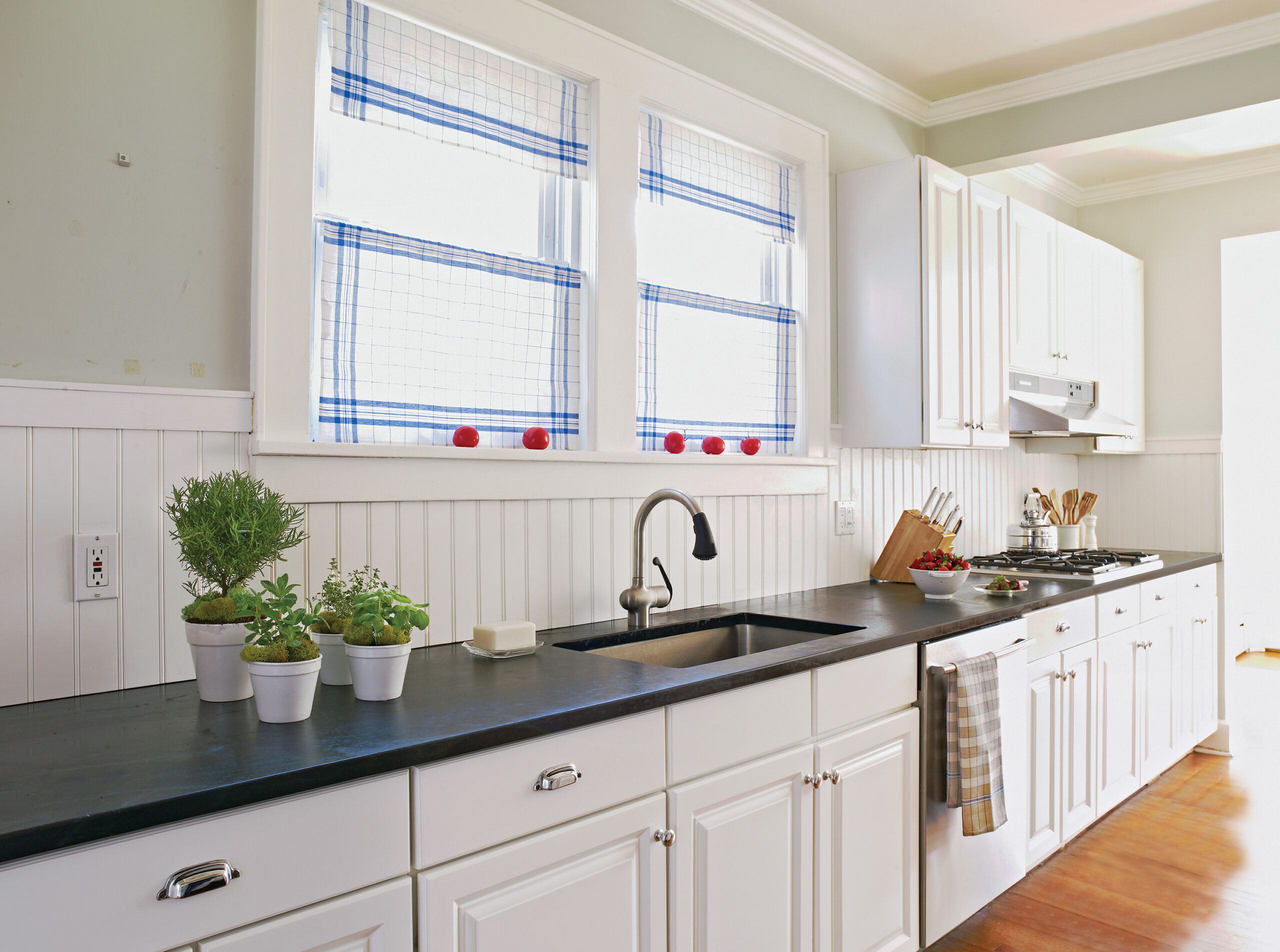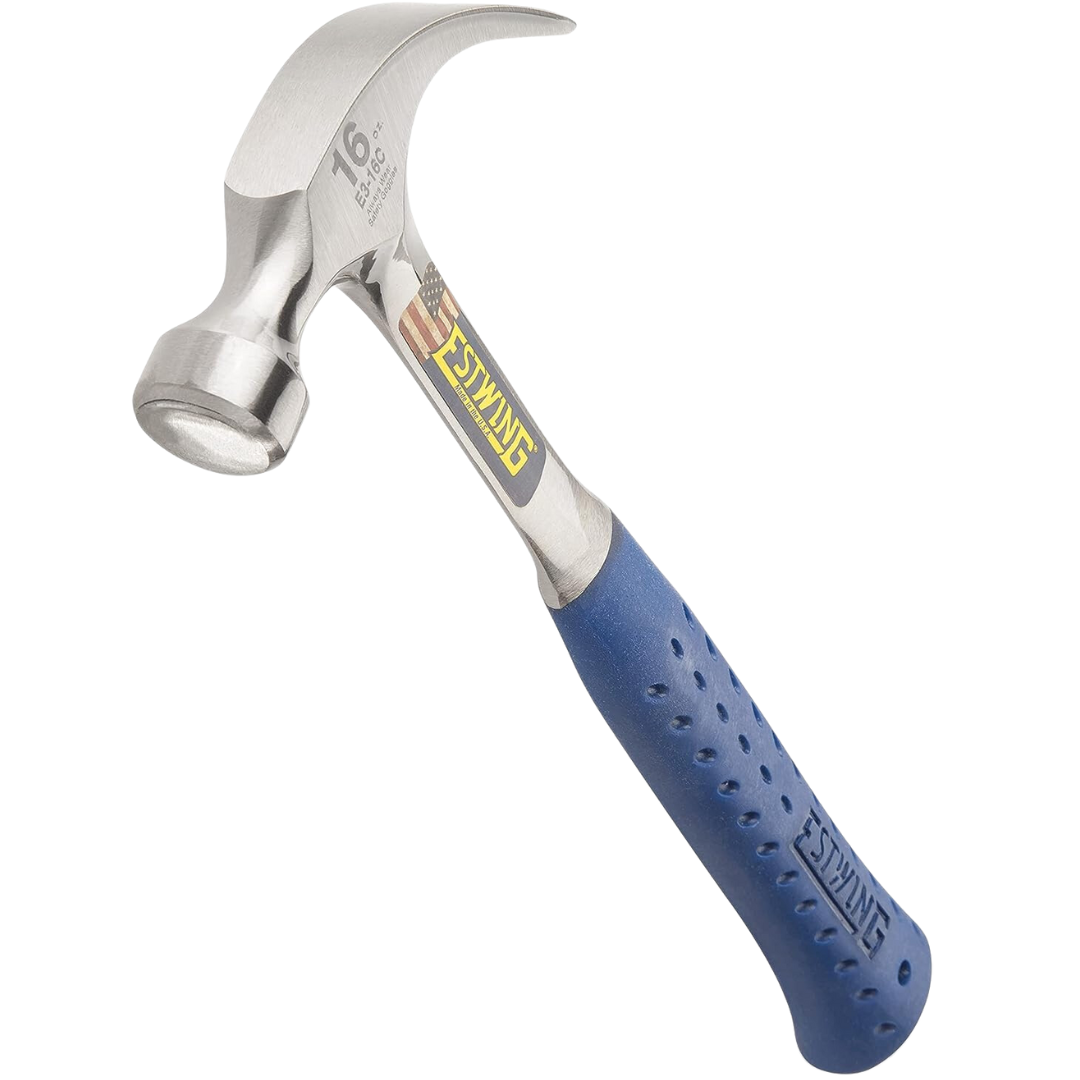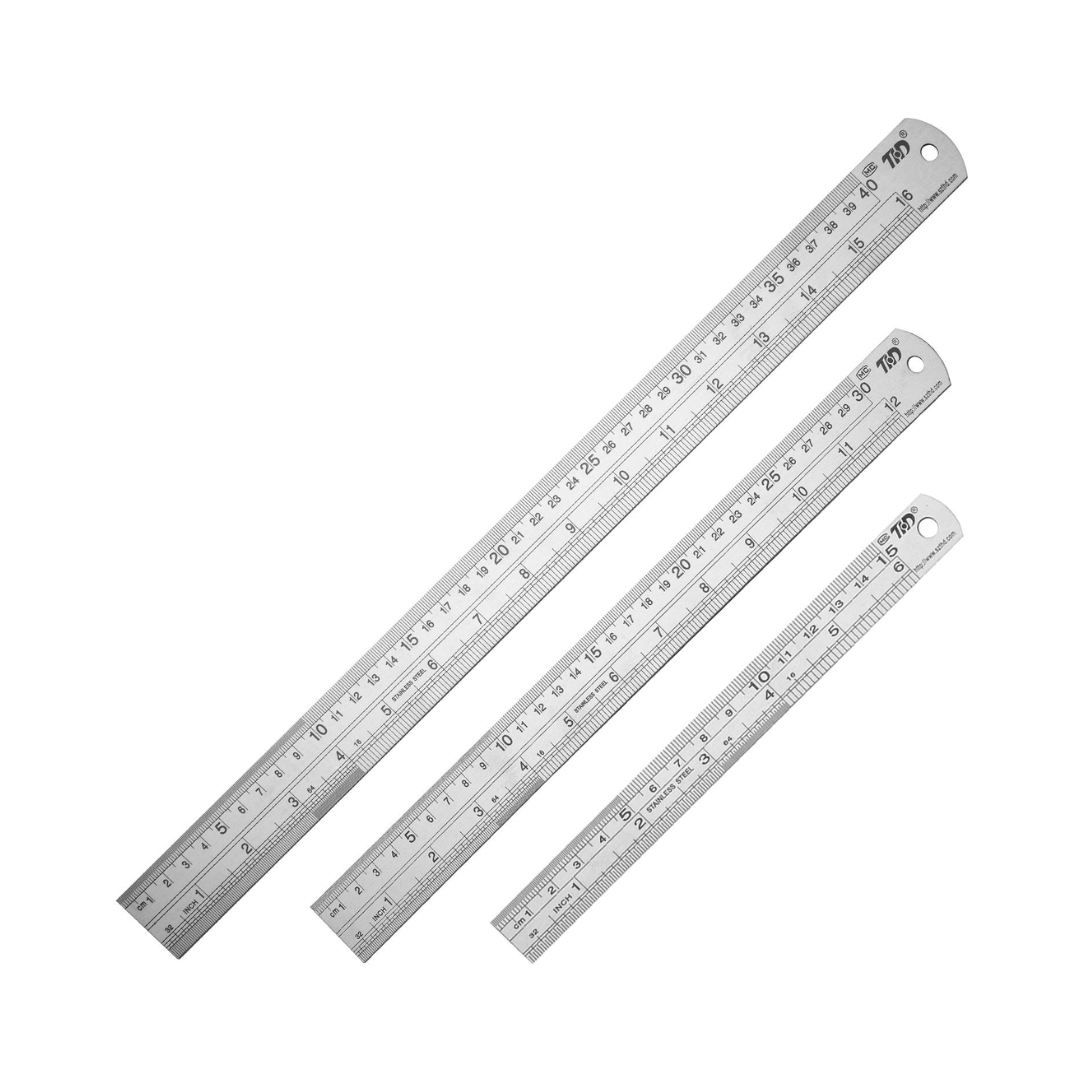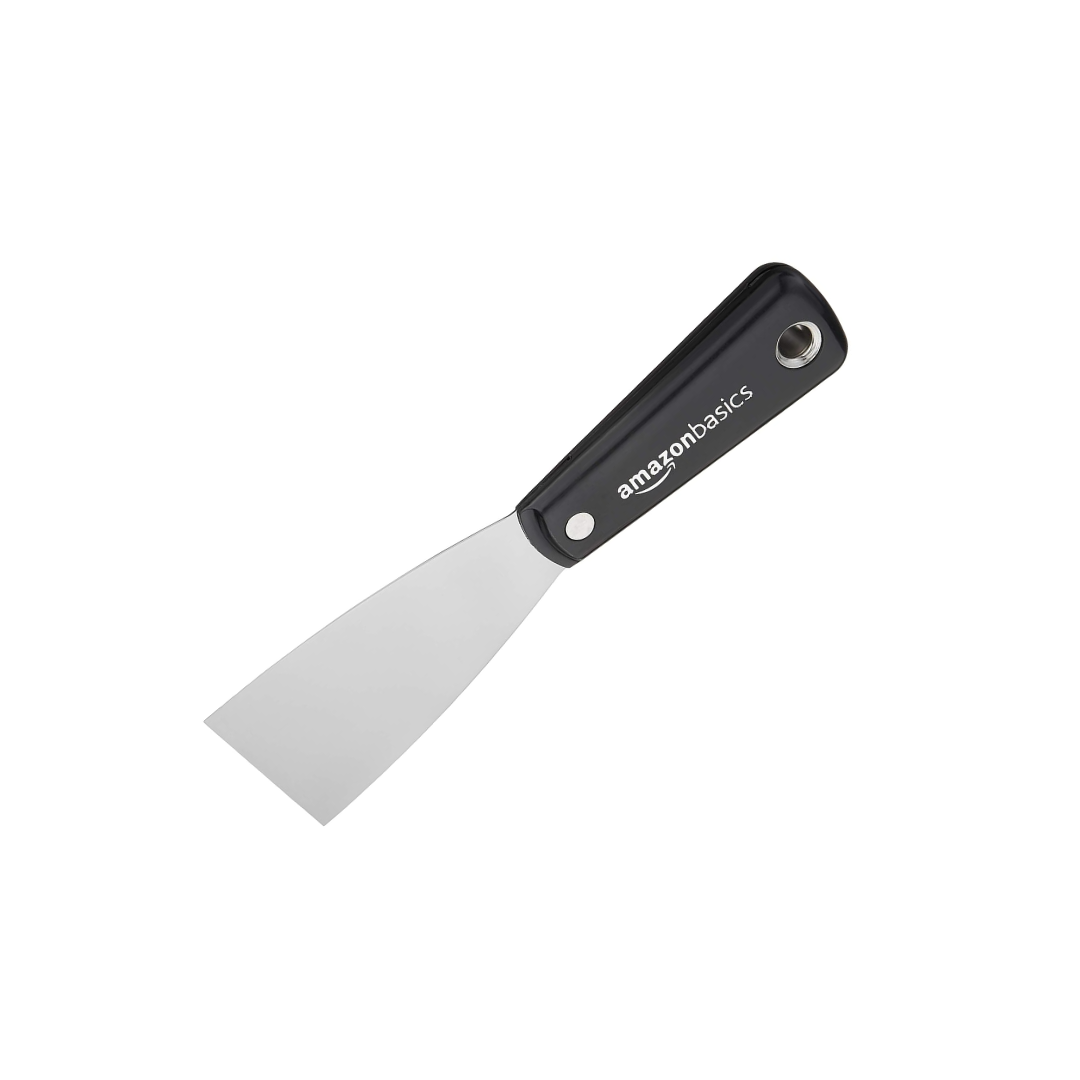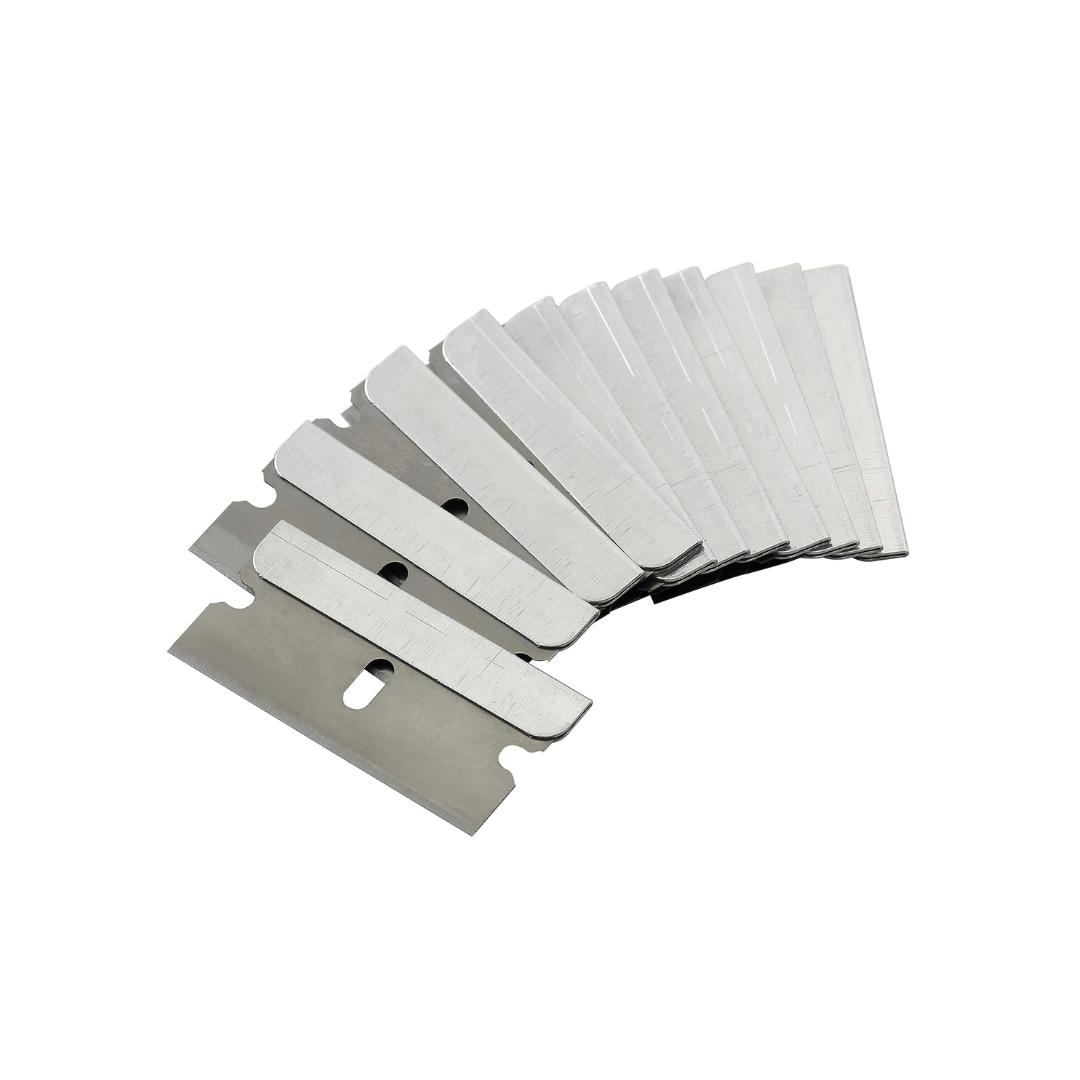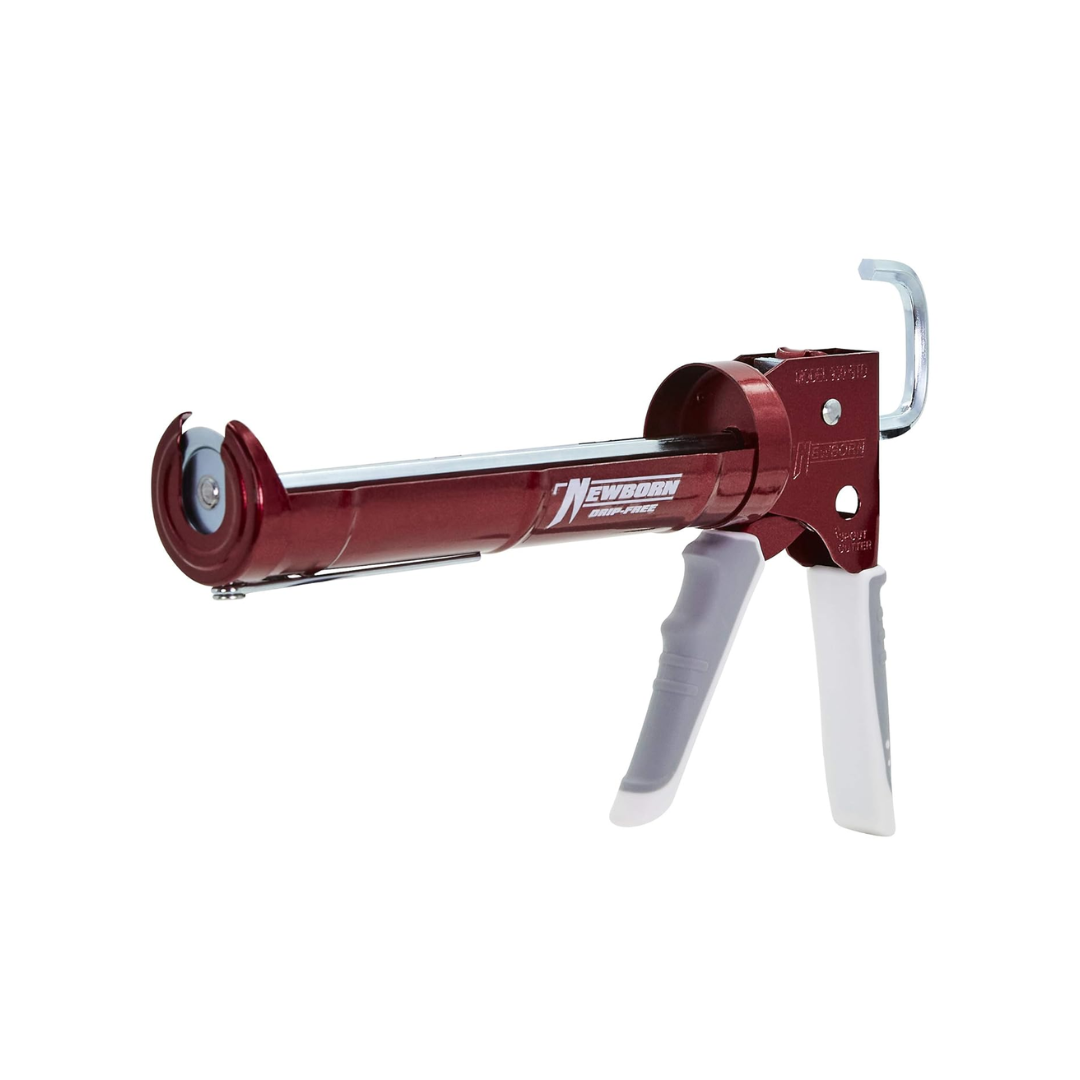We may be compensated if you purchase through links on our website. Our team is committed to delivering honest, objective, and independent reviews on home products and services.
A do-it-yourself (DIY) soapstone kitchen countertop is a great option for homeowners who want a modern look without breaking the bank. Soapstone is a metamorphic rock that is composed mostly of talc, which gives it its characteristic soft and smooth texture. Despite its softness, soapstone is durable and heat-resistant. Its high talc content makes it easier to cut and shape than harder stones like granite, making it an ideal material for DIY countertop installation. Let’s dive into the benefits of soapstone, how to install it, and ways to maintain it post-installation.
Tools and Materials for a Soapstone Countertop Installation
Before beginning your soapstone countertop installation, gather the following tools and materials:
- 4-foot level
- Spring clamps
- Hammer
- Drill/driver
- 2-inch diamond hole saw
- Straight edge
- Circular saw with diamond blade
- Jigsaw with metal-cutting blade
- Random orbit sander
- Power grinder
- Putty knife
- Razor blades
- Caulk gun
- Soapstone slabs
- Shims
- 2½-inch deck screws
- Masking tape or painter’s tape
- Silicone sealant
- Two-part epoxy adhesive
- Sandpaper (100-grit and 220-grit)
- Mineral oil
- Denatured alcohol
- Clean cotton rags
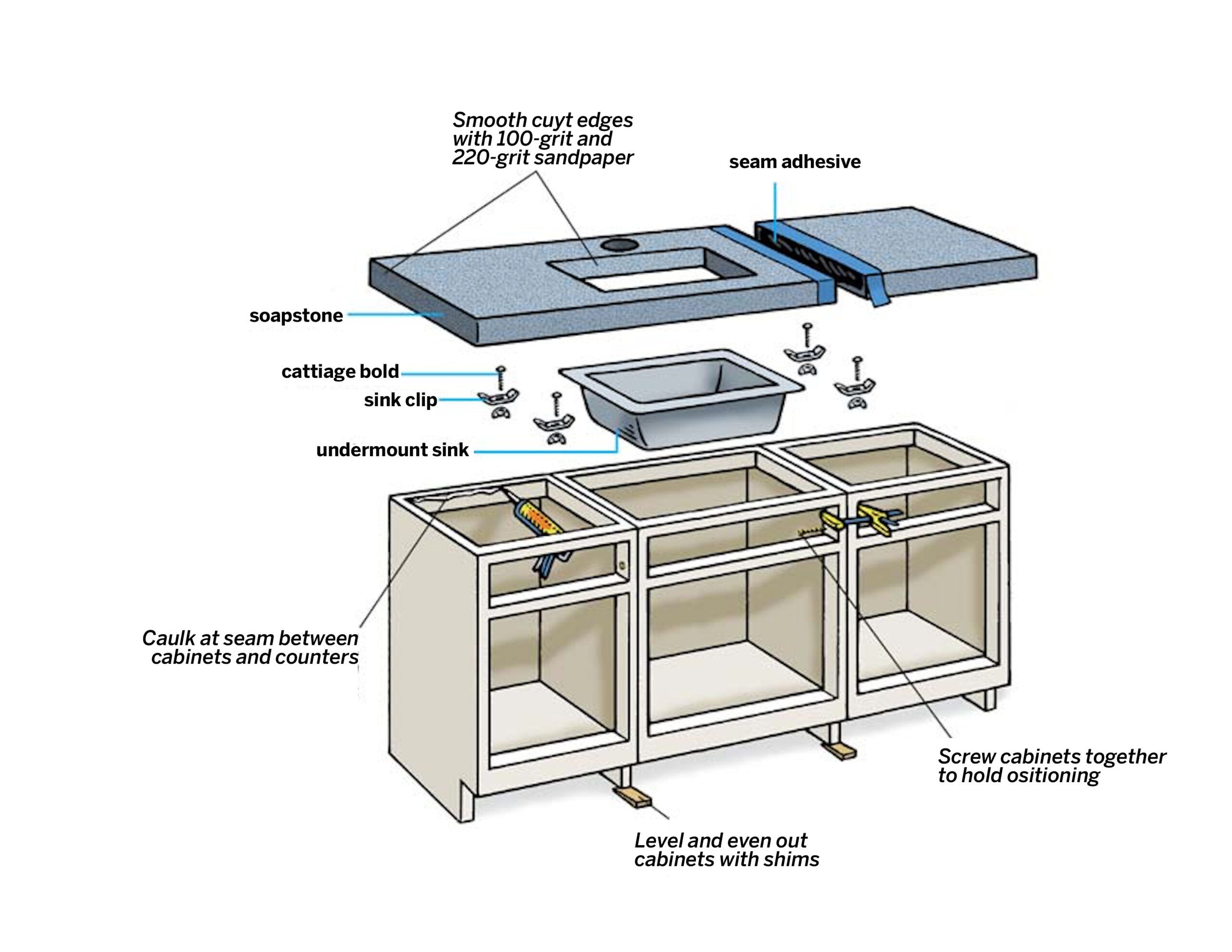
Preparing for Installation
Begin by measuring your cabinet layout and determining the size and shape of your countertop. Consider any overhangs or exposed sides where the stone will extend beyond the cabinets. As with any stone, soapstone needs a lot of support underneath it—the more surface area it rests on, the better. Gaps and voids underneath one section could put undue stress on the stone. If your space is relatively square, you may be able to skip creating a template. However, we suggest making one for more complex layouts.
Once your cabinets are level and properly aligned, prepare your cabinets by taking the following steps:
- Remove the cabinet toekick and drawers for easier access.
- Place a 4-foot level across adjacent cabinets to identify any height differences.
- Use shims under cabinet feet to level and align the tops.
- Clamp cabinets together at the stiles along drawer openings.
- Secure cabinets by driving 2½-inch deck screws through the stiles.
Continue this process until all cabinet tops are flush and level, providing a solid foundation for your soapstone countertop.
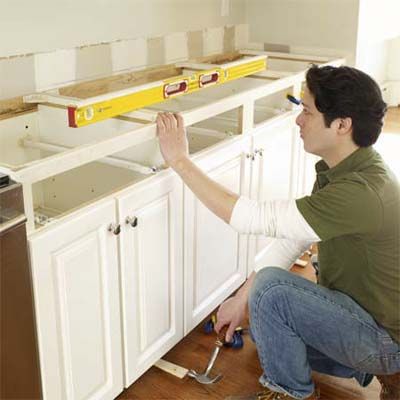
Cutting and Shaping the Soapstone
With your cabinets prepared, it’s time to cut and shape your soapstone slabs. Do this outside with a dust mask and eye protection. Since soapstone is soft, carry it outside gently with the face vertical. Soapstone is heavy, so you may need to ask someone to help you with this step.
Cutting the Slab to Size
Follow these steps to cut your slab to size:
- Measure the length of your cabinets, including any desired overhang.
- Transfer these measurements to your soapstone slab.
- Support the slab on 2x4s to raise it off the ground.
- Using a circular saw with a diamond blade and a straightedge guide, cut the stone to length.
- Repeat the process for depth, ensuring the countertop will fit your cabinet dimensions.
Tip: To prevent scratching the circular saw’s shoe, cover it with masking tape or painter’s tape before cutting the stone.
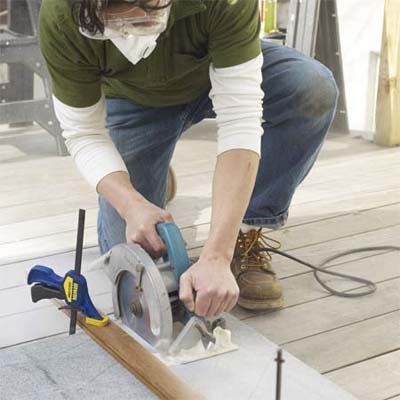
Making Sink and Fixture Cutouts
For sink and fixture cutouts, follow these steps:
- Mark the cutout location on the slab using masking tape.
- Drill holes at the corners of the cutout using a 2-inch diamond hole saw.
- Support the slab on sawhorses and clamp 2x4s underneath for added stability.
- Use a jigsaw with a metal-cutting blade to connect the drilled holes and complete the cutout.
- For undermount sinks, smooth the exposed edges with a random-orbit sander.
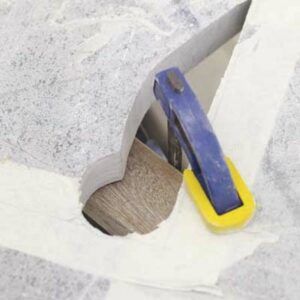

Cutting Slots for the Sink Bolts
Carefully turn the slab on edge and prop it up, exposing the underside. Then, mark the stone at the top and bottom of the two sink cutout sides, about an inch away from the edge and the corners.
Using a grinder, cut short, 1/8- to 1/4-inch-deep grooves at your marks. With the wheel in the groove, tilt the grinder sharply to either side to make a small pocket inside the stone. Leave one end of the groove wide enough to slide the head of a sink bolt into the groove.
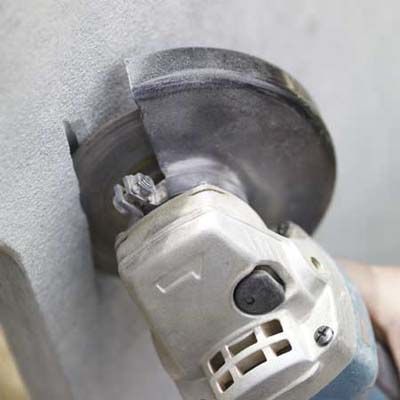
Checking the Bolts’ Alignment
Thread a sink clip onto a bolt and screw on a wing nut. Slide the head of the bolt into the grooves around the cutout and check that the clip will reach close enough to the cutout to brace the flange of the undermount sink.
Remove these bolts and clips, and set them aside before moving the stone.
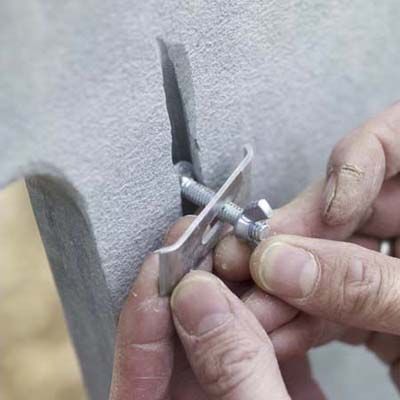
Smoothing and Finishing Edges
After cutting, smooth and finish the edges of your soapstone by taking the following steps:
- Use a random-orbit sander with 100-grit sandpaper to ease or round over cut edges.
- Follow up with 220-grit sandpaper for a smooth finish.
- Sand out any nicks or scratches on the countertop surface using the same grit progression.
For a more elaborate edge detail, you can use a router with a carbide bit. The edges will soften over time, especially around an undermount sink, adding to the stone’s rustic feel.
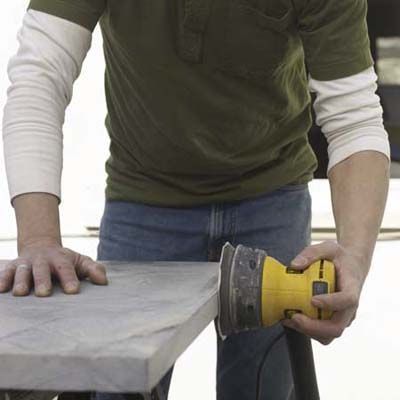
Installing the Soapstone Countertop
With your soapstone cut and shaped, you’re ready to install the countertop. This process involves carefully placing the stone, creating seams if necessary, and setting any fixtures.
Dry Fitting the Countertop
Before installation, dry fit the countertop to ensure proper alignment. These are the steps you should take:
- With help, carefully carry the slab on its edge to the cabinets.
- Gently lay the slab into position on the cabinets.
- If using multiple pieces, butt them together and check for flush alignment.
- Shim the cabinets or slab as needed to ensure full support and proper alignment.
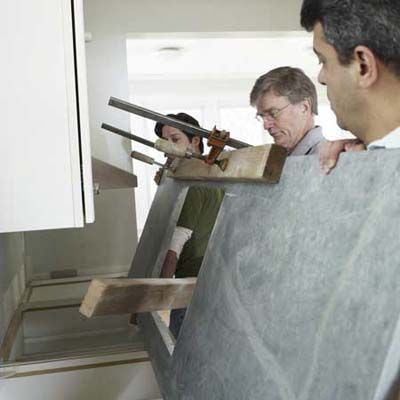
Prepping the Seams
Wherever two pieces of stone will meet at a seam, cut a series of 1/8-inch-deep slits along the edge, using a grinder fitted with a diamond blade. Space them about an inch apart, on both faces of mating slabs.
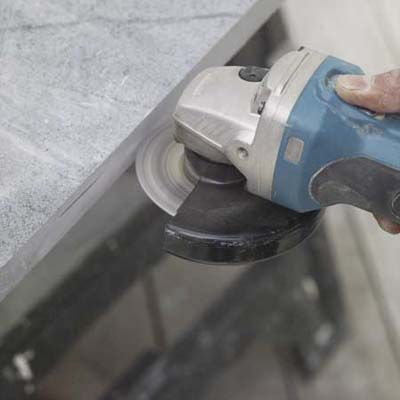
Creating and Securing Seams
Follow these steps to achieve inconspicuous seams:
- Pull the slabs apart slightly and mask off the top edges with painter’s tape.
- Mix the two-part epoxy adhesive according to the manufacturer’s instructions.
- Apply adhesive liberally to both edges, ensuring it fills any grooves or slits.
- Push the slabs back together and apply pressure for five to 10 minutes.
- Remove excess adhesive and painter’s tape.
- Once set, sand the seam with 220-grit sandpaper until flush and smooth.
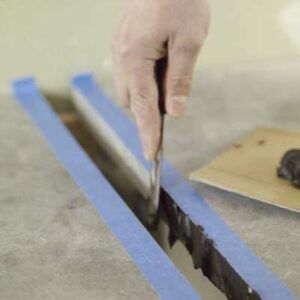
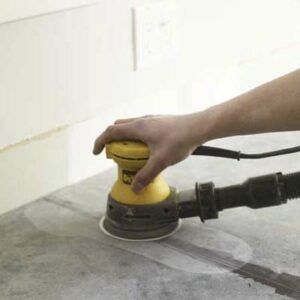
Setting the Sink
Undermount and overmount sinks require different steps for installation. For undermount sinks, do the following:
- Apply a bead of silicone along the sink’s flange.
- Position the sink under the cutout and secure it temporarily with a bar clamp.
- Adjust the sink for an even reveal around the opening.
- Install sink bolts and clips in pre-cut grooves to secure the sink permanently.
For overmount sinks, simply apply silicone under the sink’s flange and drop the sink into place. Press down until the sink is flush with the countertop, and clean any excess silicone that oozes out with denatured alcohol.

Bolting Down the Sink
Move under the counters. Install the sink bolts and clips in the grooves and tighten them over the flange. Be careful not to overtighten the nut, which could crack the soapstone. Let the silicone cure overnight before plumbing the sink from underneath the counter. Squeeze a bead of sealant along the seam between the stone and the cabinets.
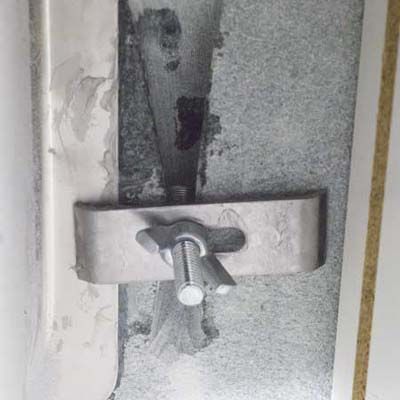
Adjusting the Wall To Fit the Stone
If the wall behind the counter has any small bows or bumps, use a utility knife to create a channel for the stone. If you’re also installing a backsplash, you can leave as much as a 1/4-inch gap at the back.
Finishing Touches and Maintenance
These final steps will make your new soapstone countertops shine.
Applying Mineral Oil
Mineral oil treatment enhances soapstone’s natural beauty and accelerates the darkening process. Here’s how you can apply mineral oil to your new countertops:
- Clean the countertop thoroughly with denatured alcohol.
- Once dry, apply mineral oil liberally to the entire surface.
- Wipe off excess oil with a clean cotton rag.
- Repeat this process twice a week for the first nine months to develop a rich patina.
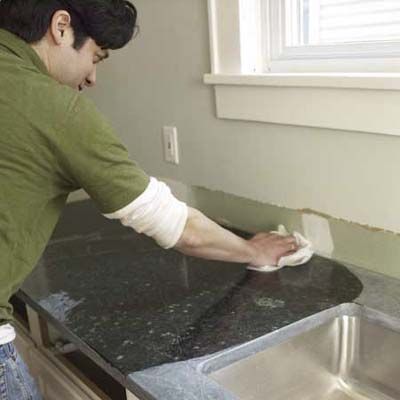
Ongoing Care and Upkeep
Soapstone is relatively low-maintenance, but proper care will ensure its longevity. Here are a few long-term care tips:
- Avoid harsh chemical cleaners.
- Address scratches by sanding lightly and reapplying mineral oil.
- Clean your counters regularly with mild soap and water.
- Periodically reapply mineral oil to maintain the stone’s rich appearance.
Troubleshooting Common Soapstone Countertop Installation Issues
Installing a countertop can be challenging. Here are a few complications you may encounter and how to resolve them.
Dealing With Uneven Walls
If your walls aren’t perfectly straight, you may need to create a small gap between the countertop and the wall. Use a utility knife to create a channel in the wall for the stone to fit into. For larger gaps, consider installing a backsplash to cover the space.
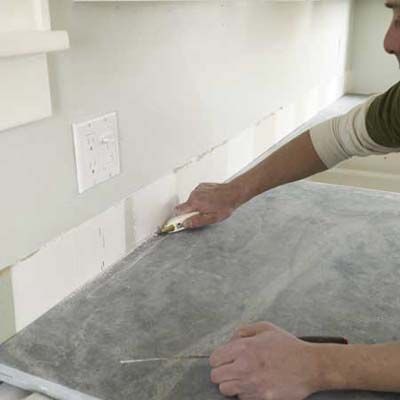
Addressing Gaps and Misalignments
If you notice gaps or misalignments after installation, use shims to adjust the cabinet or countertop height as needed. For small gaps between seams, use color-matched epoxy to fill and smooth the area. If misalignments are significant, you may need to recut or adjust the stone pieces.
Benefits of Choosing Soapstone for Countertops
Soapstone countertops offer several advantages over other materials, including the following:
- Affordability: Soapstone is often less expensive than granite or engineered stone, especially when you factor in DIY installation.
- DIY-friendly: Its softness allows for easier cutting and shaping with standard woodworking tools.
- Durability: While softer than some stones, soapstone is highly resistant to heat and stains.
- Low maintenance: Soapstone doesn’t require sealing and is naturally antibacterial.
- Unique appearance: The stone darkens over time, developing a rich patina that many homeowners find appealing.
